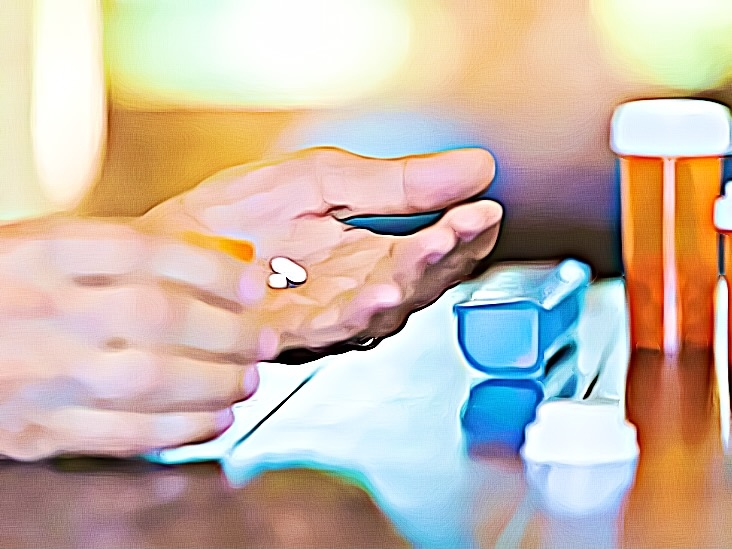If you’re suffering from back pain or you have a condition that causes your muscles to spasm, it’s quite possible that your doctor will prescribe a form of medication called a muscle relaxer. These drugs can help reduce the frequency and severity of muscle spasms. While they can be effective with their intended use, muscle relaxers can be abused like any other form of medication. In this guide, we look at the possibility of muscle relaxers being addictive and how they can affect your body if abused or misused.
What are Muscle Relaxers?
Before we look at how muscle relaxers work, it might be helpful to know what they are. Essentially, muscle relaxers are types of sedatives that are taken to relax the muscles. Although many people use the terms ‘muscle relaxer’ and ‘sedatives’ interchangeably, these are two different types of drugs.
Sedatives, as you might know, are a type of drug that results in sleepiness. On the other hand, muscle relaxers are drugs that are taken to temporarily relieve pain and muscle spasms.
How Do Muscle Relaxers Work?
Muscle relaxers work by blocking the activity of a chemical known as acetylcholine. This chemical is known to increase the activity of your skeletal muscles. As such, when muscle relaxers are taken, they can decrease the activity of these muscles to bring about temporary relief of pain or muscle spasms. Without acetylcholine, your muscles won’t spasm as much, and the stiffness in your joints will be reduced.
It’s important to note that there are two types of muscle relaxers in terms of how they are used.
Short-Acting Muscle Relaxers
Short-acting muscle relaxers, as you might have guessed, begin to work as soon as they are taken. They are taken before any procedures that might involve you being physically active. Examples of short-acting muscle relaxers include but are not limited to Valium (diazepam).
After taking it, one can immediately feel its effect, resulting in a sense of calmness. However, the effect usually only lasts for a couple of hours.
Long-Acting Muscle Relaxers
Long-acting muscle relaxers are taken daily like any other prescription drug. A person will typically feel its effect after a few days of being taken. They are also commonly used with other medications like antidepressants to treat chronic pain. Soma (carisoprodol) is a good example of a long-acting muscle relaxer. It is used primarily for those who suffer from acute and chronic back pain or for those who experience pain after a procedure.

Known Brands of Muscle Relaxers
Depending on your condition, your doctor can prescribe you a certain type of muscle relaxer. Below is a list of brands and drugs commonly used to treat conditions that cause muscle spasms:
Soma – It’s used for acute and chronic pain and is often prescribed for those who have undergone surgery.
Cymbalta (duloxetine) – This drug is used for people who suffer from fibromyalgia and diabetic neuropathy.
Cyclobenzaprine – It’s used to treat muscle spasms and pain in the back and other joints and muscles.
Carisoprodol – It’s used to treat acute and chronic back pain.
Tizanidine – It’s used to treat muscle spasms and pain resulting from conditions like multiple sclerosis.
Side Effects of Muscle Relaxers
As with any other drug, muscle relaxers can cause a variety of side effects. However, this is mostly dependent on the dosage that one takes. For example, if you take a dosage two times the recommended amount, chances are you will experience intense side effects. On the other hand, if you just take the dosage normally, you might not experience any side effects.
Below are some of the most common side effects experienced when muscle relaxers are taken:
- Dry mouth
- Dizziness
- Inability to urinate frequently
- Confusion
- Dilated pupils
- Difficulty breathing
Dry mouth, in particular, should be monitored as it can cause problems with your teeth due to a lack of saliva.
How Can Muscle Relaxers Be Abused?
Muscle relaxers can be abused in the same way as other prescription medications. This means that people who don’t need the medication can take it for the purpose of getting high or for the euphoric sensation that it gives them.
Some people take muscle relaxers to help them relax or to help them get to sleep. However, it is important to know that muscle relaxers rarely work this way unless you’re taking the recommended dose. Otherwise, it can lead to complications such as extreme sleepiness.
One of the ways that muscle relaxers are abused is by crushing them into a powder and snorting them. Another way is to take them orally and either dilute them or take more than the recommended amount. Aside from these popular methods, people can also inject them with a syringe.
Do Muscle Relaxers Cause Physical Dependence?
Physical dependence occurs when a person has developed a tolerance to a drug, and their body becomes used to it. As a result, when you try to stop taking the drug, your body will have a negative reaction. Your body is used to the drug, so it doesn’t know how to react or function normally without it.
Those who are physically dependent on a drug will experience withdrawal when they stop taking it. So, do muscle relaxers cause physical dependence?
The short answer is yes, muscle relaxers can cause physical dependence. If you take short-acting muscle relaxers such as Valium (diazepam), you will become physically dependent on them if you take them for an extended period of time. Although you feel less pain and spasms, your muscle relaxers are still affecting your system. If you stop taking them, you will experience withdrawal symptoms.
With long-acting muscle relaxers like Soma (carisoprodol), your body can also become physically dependent on them. However, you might not experience withdrawal symptoms when you stop taking them. Instead, you might experience an increase in pain and stiffness. You might also begin to suffer from muscle spasms, which can be painful.
Can Muscle Relaxers Be Addictive?
While muscle relaxers can’t be classified as addictive, they can be considered as a substance that can be abused. In many ways, drug abuse can lead to dependency. Nevertheless, using these drugs for recreational purposes can also lead to abuse.
The main difference between drug abuse and addiction is that abuse doesn’t cause a person to lose control over their drug use. On the other hand, addiction does. One can be considered an addict when they feel like they need the drug to function normally. This means that they don’t have a choice but to take them.
Can You Overdose on Muscle Relaxers?
All muscle relaxers can cause an overdose in high enough quantities. Although it’s not advised, one can overdose on these drugs.
The symptoms of a muscle relaxer overdose are similar to those from an overdose of sedatives. In fact, a combination of muscle relaxers and sedatives can lead to a more severe overdose. Some of these symptoms include:
- Dizziness or feeling light-headed
- Slow or irregular heartbeat
- Difficulty breathing or shortness of breath
- Seizures
- Loss of consciousness
Is There a Safe Way to Relieve Muscle Spasms?
It’s important to note that there are safe forms of relief for muscle spasms. If you are experiencing spasms, you shouldn’t go out and buy a muscle relaxer right away. Instead, you should see a doctor to see what other forms of relief can be given.
With other types of spasms, such as those that are brought about by exercise, you can relieve them by applying heat or cold to the area. There are many forms of heat and cold therapy that you can use, such as ice and heat packs.
If you find that your pain or spasms don’t go away no matter what you do, you can then consult with your doctor for a more effective treatment.
Conclusion
While muscle relaxers are effective when used appropriately, they are not completely safe. If you are taking muscle relaxers, it’s important to do so only under supervision. You should also follow your doctor’s instructions carefully. This will help you prevent any side effects or an overdose. In the end, it all comes down to how the drug is being used.
Source:https://www.ncbi.nlm.nih.gov/pmc/articles/PMC8262447/




